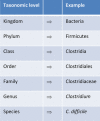The Mammalian Microbiome and Its Importance in Laboratory Animal Research
- PMID: 26323624
- PMCID: PMC4854015
- DOI: 10.1093/ilar/ilv031
The Mammalian Microbiome and Its Importance in Laboratory Animal Research
Erratum in
-
Erratum.ILAR J. 2016;56(3):343. doi: 10.1093/ilar/ilv049. ILAR J. 2016. PMID: 26912721 Free PMC article. No abstract available.
Abstract
In this issue are assembled 10 fascinating, well-researched papers that describe the emerging field centered on the microbiome of vertebrate animals and how these complex microbial populations play a fundamental role in shaping homeostasis of the host. The content of the papers will deal with bacteria and, because of relative paucity of information on these organisms, will not include discussions on viruses, fungus, protozoa, and parasites that colonize various animals. Dissecting the number and interactions of the 500-1000 bacterial species that can inhabit the intestines of animals is made possible by advanced DNA sequencing methods, which do not depend on whether the organism can be cultured or not. Laboratory animals, particularly rodents, have proven to be an indispensable component in not only understanding how the microbiome aids in digestion and protects the host against pathogens, but also in understanding the relationship of various species of bacteria to development of the immune system. Importantly, this research elucidates purported mechanisms for how the microbiome can profoundly affect initiation and progression of diseases such as type 1 diabetes, metabolic syndromes, obesity, autoimmune arthritis, inflammatory bowel disease, and irritable bowel syndrome. The strengths and limitations of the use of germfree mice colonized with single species of bacteria, a restricted flora, or most recently the use of human-derived microbiota are also discussed.
Keywords: animal; human microbiome; mice; microbiota; models; review.
© The Author 2015. Published by Oxford University Press on behalf of the Institute for Laboratory Animal Research. All rights reserved. For permissions, please email: journals.permissions@oup.com.
Figures



Similar articles
-
The potential impact of gut microbiota on your health:Current status and future challenges.Asian Pac J Allergy Immunol. 2016 Dec;34(4):249-264. doi: 10.12932/AP0803. Asian Pac J Allergy Immunol. 2016. PMID: 28042926 Review.
-
Lupus: The microbiome angle.Immunobiology. 2018 Jun-Jul;223(6-7):460-465. doi: 10.1016/j.imbio.2017.11.004. Epub 2017 Nov 16. Immunobiology. 2018. PMID: 29478734 Review.
-
An Update on the Status of Current Research on the Mammalian Microbiome.ILAR J. 2015;56(2):163-8. doi: 10.1093/ilar/ilv033. ILAR J. 2015. PMID: 26323626 Review.
-
The Gastrointestinal Microbiome: A Review.J Vet Intern Med. 2018 Jan;32(1):9-25. doi: 10.1111/jvim.14875. Epub 2017 Nov 24. J Vet Intern Med. 2018. PMID: 29171095 Free PMC article. Review.
-
[Review of the relation between gut microbiome, metabolic disease and hypertension].Orv Hetil. 2018 Mar;159(9):346-351. doi: 10.1556/650.2018.30787. Orv Hetil. 2018. PMID: 29480046 Review. Hungarian.
Cited by
-
Metaplasmidome-encoded functions of Siberian low-centered polygonal tundra soils.ISME J. 2021 Nov;15(11):3258-3270. doi: 10.1038/s41396-021-01003-y. Epub 2021 May 19. ISME J. 2021. PMID: 34012103 Free PMC article.
-
Microbiota Alters Urinary Bladder Weight and Gene Expression.Microorganisms. 2020 Mar 17;8(3):421. doi: 10.3390/microorganisms8030421. Microorganisms. 2020. PMID: 32192034 Free PMC article.
-
Association of a dysbiotic oral microbiota with the development of focal lymphocytic sialadenitis in IκB-ζ-deficient mice.NPJ Biofilms Microbiomes. 2020 Oct 30;6(1):49. doi: 10.1038/s41522-020-00158-4. NPJ Biofilms Microbiomes. 2020. PMID: 33127905 Free PMC article.
-
Immune responses to the real world.Lab Anim (NY). 2017 Dec 29;47(1):13-14. doi: 10.1038/laban.1384. Lab Anim (NY). 2017. PMID: 29297473 No abstract available.
-
Health Monitoring of Laboratory Rodent Colonies-Talking about (R)evolution.Animals (Basel). 2021 May 14;11(5):1410. doi: 10.3390/ani11051410. Animals (Basel). 2021. PMID: 34069175 Free PMC article. Review.
References
-
- Basic M, Keubler LM, Buettner M, Achard M, Breves G, Schroder B, Smoczek A, Jorns A, Wedekind D, Zschemisch NH, Günther C, Neumann D, Lienenklaus S, Weiss S, Hornef MW, Mähler M, Bleich A. 2014. Norovirus triggered microbiota-driven mucosal inflammation in interleukin 10-deficient mice. Inflamm Bowel Dis 20:431–443. - PubMed
-
- Becker C, Neurath MF, Wirtz S. 2015. The intestinal microbiota in inflammatory bowel disease. ILAR J 56:192–204. - PubMed
-
- Bleich A, Hansen AK. 2012. Time to include the gut microbiota in the hygienic standardisation of laboratory rodents. Comp Immunol Microbiol Infect Dis 35:81–92. - PubMed
-
- Bleich A, Mähler M. 2005. Environment as a critical factor for the pathogenesis and outcome of gastrointestinal disease: experimental and human inflammatory bowel disease and helicobacter-induced gastritis. Pathobiology 72:293–307. - PubMed
MeSH terms
Grants and funding
LinkOut - more resources
Full Text Sources
Other Literature Sources

